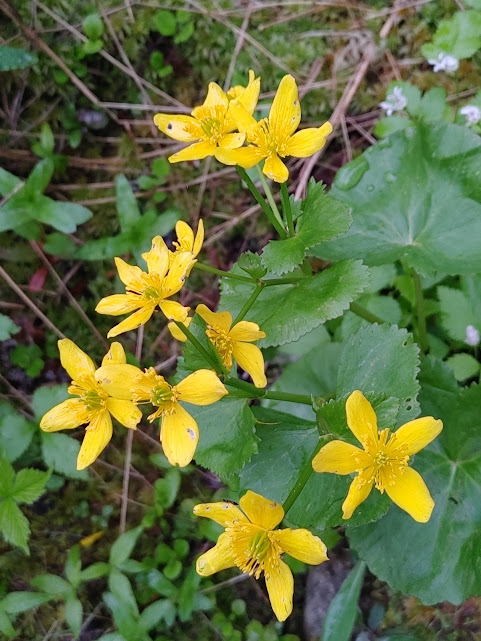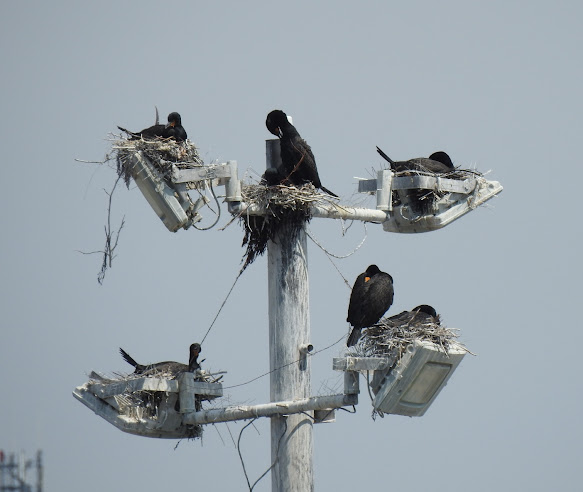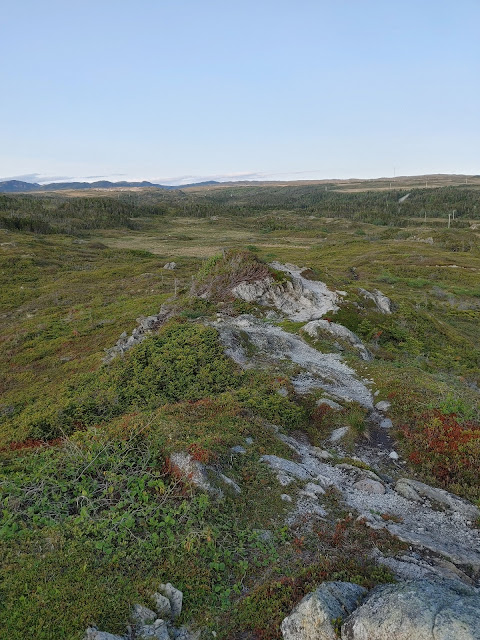Gros Marne is a Unesco world heritage site because it "provides a rare example of the process of continental drift, where deep ocean crust and the rocks of the earth's mantle lie exposed." Thus the Tablelands. The soil contains high concentrations of toxic minerals and little nitrogen, phosphorus or potassium, the essential minerals for plant life.
What vegetation you do see grows because of later glaciation which brought in other rocks. Lichen was able to grow on the bits of normal rocks, and then other vegetation was able to establish itself.
The trees are still very stunted.
The other successful plants are the carnivorous species because they get their nutrients from the insects they capture and digest:
Picture plant, Newfoundland's Provincial flower,
Butterwort:
And sundew.
Afterwards we continued on to Trout River, a typical Newfoundland fishing village.
They've built a boardwalk along the shore as a low-key tourist attraction.
We were the only tourists there.


















































